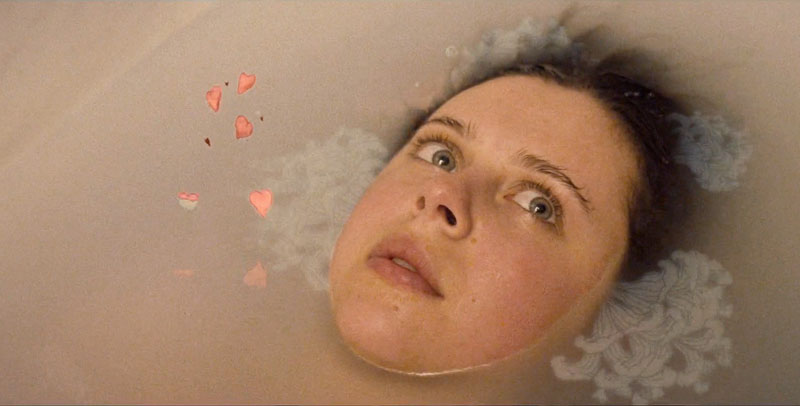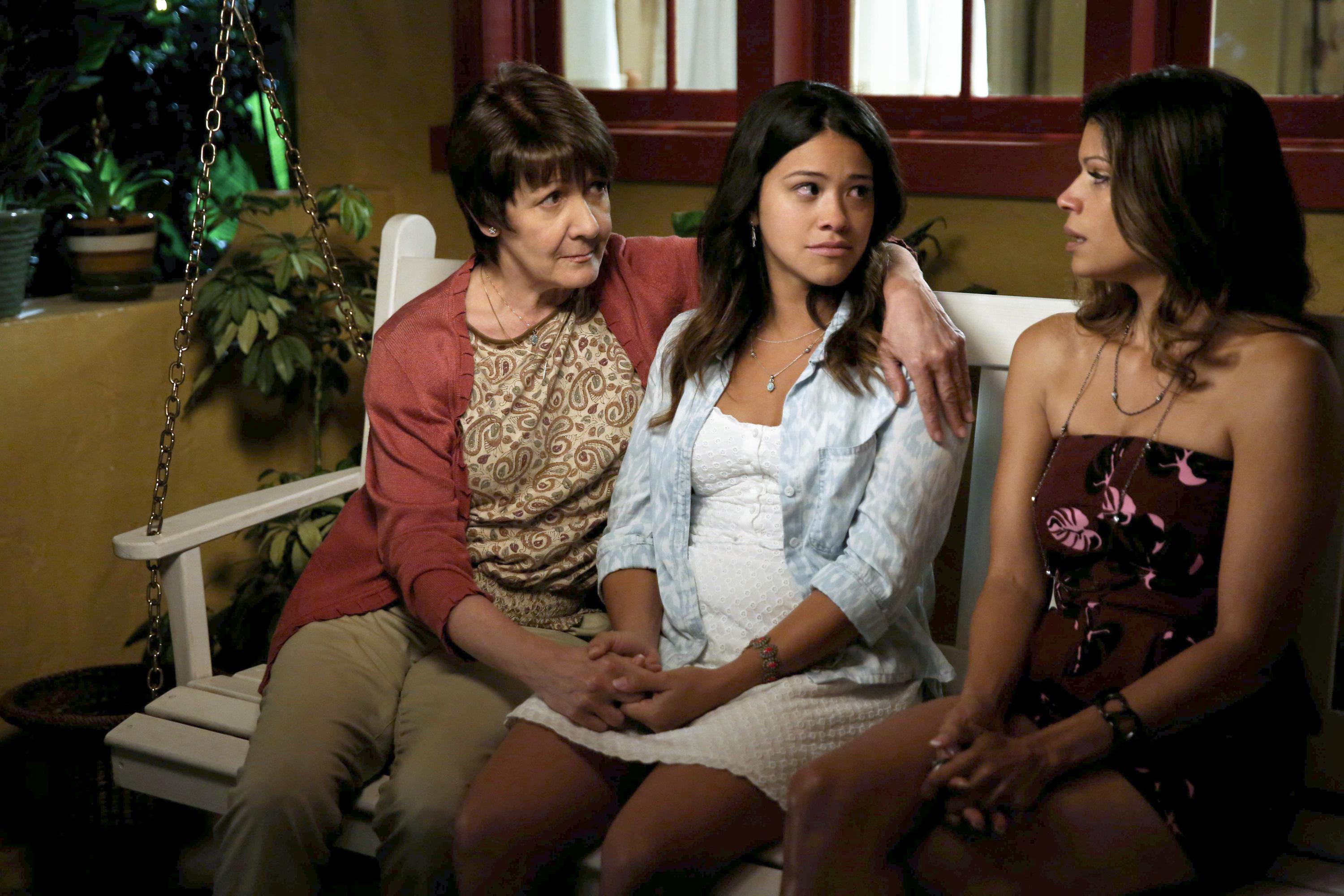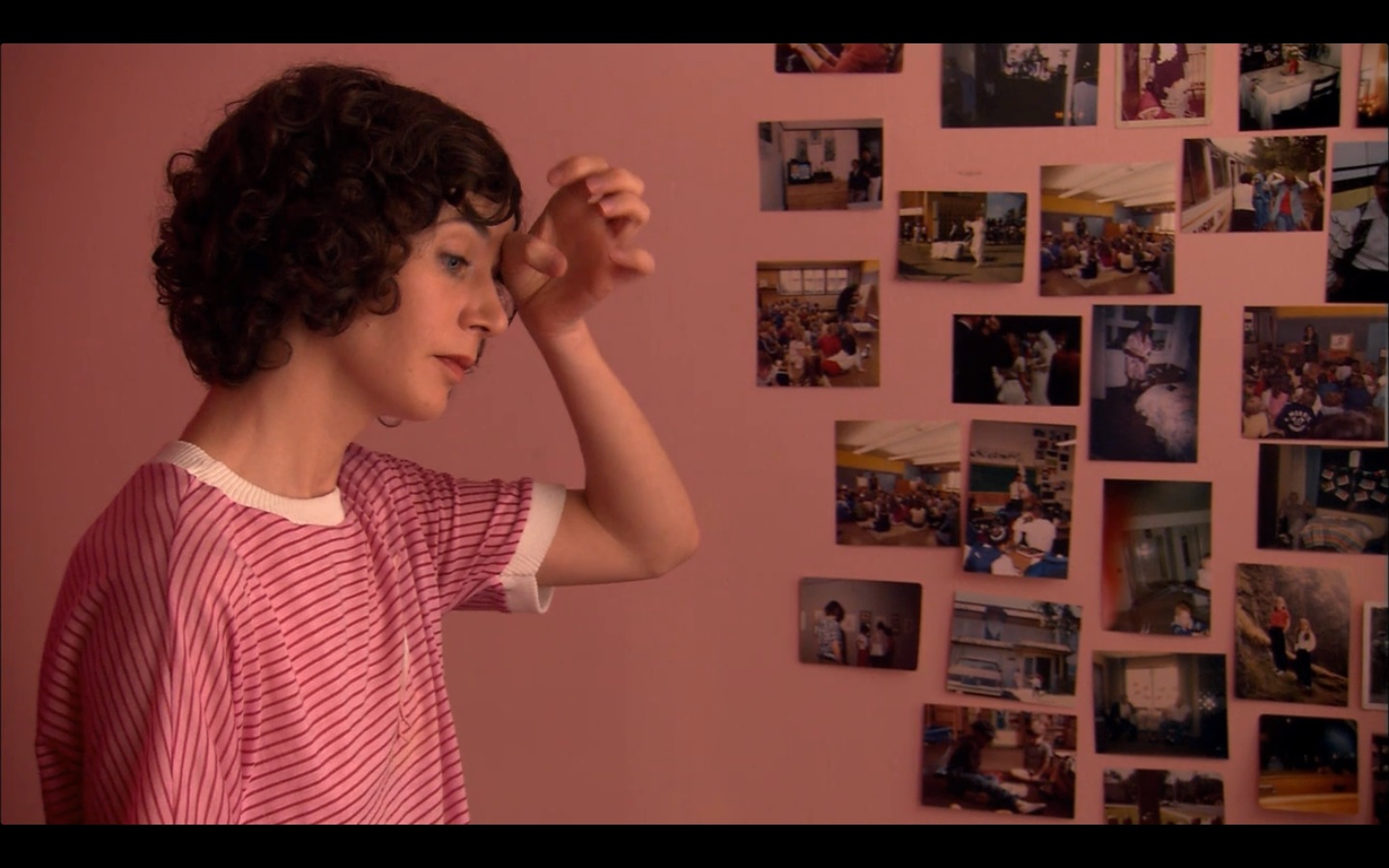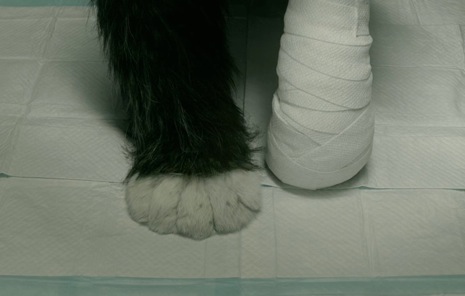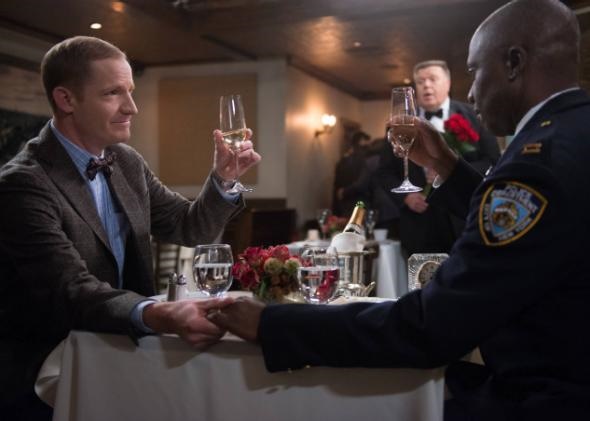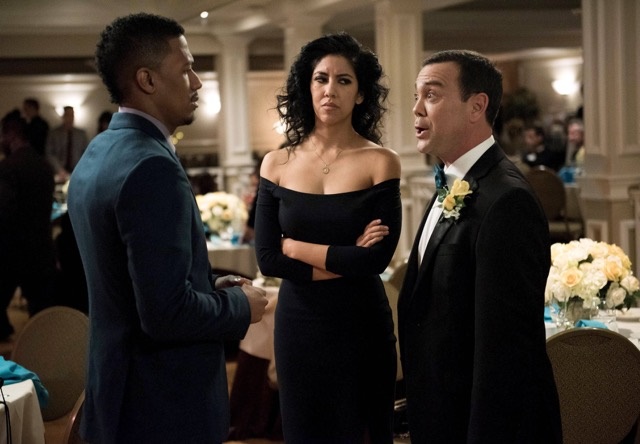This guest post written by Laura Power appears as part of our theme week on Sisterhood.
Female siblings have been a go-to in horror films since horror films themselves. Sisters have been used as minor characters to fill in a cast: Daisy and Violet, the conjoined twins, and Elvira and Jenny Lee, the “Pinhead” twins, in 1932’s Freaks; the Soska sisters playing twin body-modification gurus in their own film American Mary; as specters that haunt a protagonist (the murdered twins in The Shining); as a smaller pair within a larger community of women (Danielle and Laurie in Trick ‘r Treat); and as protagonists (the Crane sisters in Psycho, Su-mi and Su-yeon in A Tale of Two Sisters, Jay and Kelly Height in It Follows).
So what makes sisters such fascinating subject matter for horror films? What makes them both scary and powerful, yet the most vulnerable, both to outside forces as well as to each other when they are threatened?
Sisters are bound by unconditional forces: love, blood, family. Yet unlike the mother-child story in horror movies (Carrie, The Exorcist, The Babadook), the story of sisters in horror has the potential to be more forceful, more frightening. Sisters can behave as a single entity and fight for the same things, but there are two bodies — two physical forces — to reckon with. Sisters share secrets that no one else is privy to, and those secrets bind them together and make them mysterious and sometimes deadly. And turning on your sister is the ultimate betrayal, scarier and more unexpected than an attack from an outsider, which is why it makes for such effective conflict in film, especially in horror.
Sisters represent a single strong force that is duplicated in another person. Sisters work together, act together, and yet even when forces are driving them apart, they are powerful. In fact, sisters frequently become even more powerful when they are reacting to those forces that are driving them apart: they become more cunning, braver, smarter, stronger, and usually more violent and dangerous. They become even more of the “other” than they are already, and this force can be either terrifying or heroic — and sometimes both.
This power dynamic is exhibited beautifully and thoroughly in the Canadian horror film Ginger Snaps, written by Karen Walton and directed by John Fawcett. The film’s sisters, Brigitte (Emily Perkins) and Ginger (Katharine Isabelle) begin the story as a powerful duo. As children, they made a blood oath because just being sisters wasn’t enough. In school as teenagers, they stick together, even as outcasts, collaborating on a morbid “Life in Bailey Downs” photo project, standing together as though they are a single brooding unit, protecting each other on the field hockey pitch, and wearing a similar uniform of thick, dark, oversized clothing. But when the girls are driven apart — by their biological differences, both natural (Ginger starts menstruating) and unnatural (Ginger becomes a werewolf) — the changes between them that follow only seem to increase each girl’s power.
While Ginger becomes increasingly powerful physically and sexually, taking on the role of male aggressor with Jason, and tackling and beating Trina when she attacks Brigitte in a game of field hockey, Brigitte becomes increasingly powerful physically and emotionally. She is required to problem solve time and time again, and the stakes get higher and higher. Brigitte pierces her sister’s belly button with a silver ring hoping it will curb Ginger’s werewolf traits; Brigitte reacts quickly to Trina’s accidental death in their household kitchen to make sure their parents don’t suspect what has happened (and then she chips away at Trina with a screwdriver, dislodging the girl’s stiff, dead fingers from her hand). And Brigitte problem solves, delegates, and acts with maturity to the ever-increasing drama and violence around her. When the sisters have to dig a grave to bury Trina, Brigitte makes Ginger do the physical labor while she watches. She takes charge to figure out a way to help Ginger by hiding it from their parents, locking her sister in the basement bathroom, and enlisting drug-dealer Sam’s help to cook up a cure. But Brigitte must also decide if trying the cure on Ginger is worth the possibility of killing her, of losing her sister for good. And then, ultimately, Brigitte must make the decision to live and to fight — to the death — the werewolf her sister has become.
And perhaps another relative would have taken this same trajectory to help a family member or loved one. But would they have gone far enough? We see that the girls’ mother, Pamela Fitzgerald (Mimi Rogers), is willing to make major sacrifices to protect her daughters: when she finds out the girls are responsible for Trina’s death, she plans to burn the house down and take them away to “start fresh.” She is protective and proactive rather than scared or angry; but is this mother-daughter relationship stronger than the sisters’ bond? No. It is Brigitte who soothes her mother and then gives her instructions (which Pamela doesn’t follow). It is Brigitte who reenacts the sisters’ blood oath by slicing her palm and pressing it against Ginger’s, knowing that this action likely infects her with the same virus her sister suffers from. It is Brigitte who is willing to try to become a part of Ginger’s “pack” and drinks Sam’s blood. Even though Brigitte ultimately can’t follow that through, she is willing to try, and this bond — this willingness to stand together — is what makes these sisters such a powerful force.
But what happens when one sister is not willing to sacrifice for another? As Brian De Palma shows us with his 1973 film Sisters, the results can be just as powerful and just as deadly.
In Sisters, Margot Kidder plays Danielle, a French-Canadian actress and model living on Staten Island. But Danielle has a sister — a twin sister, Dominique — who we believe is disturbed and violent, and responsible for the death of Danielle’s love interest, Phillip, at the start of the film. But as the story develops we learn that Dominique, who was not just Danielle’s twin sister, but her conjoined twin sister, died a year earlier during an operation to separate them. It is, in fact, Danielle who is the murderer; it is she who has been having violent episodes and “becoming” her dead sister to assuage the guilt at having been indirectly responsible for Dominique’s death. Danielle wasn’t willing to sacrifice her romantic relationship for her conjoined twin, and she asked Emile (her doctor and lover) to “make [Dominique] go away” so that she and Emile could make love. This desire started a deadly chain-reaction, resulting in Danielle getting pregnant, Dominique reacting violently, and stabbing her sister in the stomach to end the pregnancy, and the doctors needing to separate the twins in order to save Danielle’s life, knowing that the surgery would kill Dominique.
The removal of Dominique from Danielle — removing her from Danielle’s physical body, and removing her from Danielle’s life — had such a powerful impact on Danielle that it split her mind in two. The Dominique side of her lashes out at anyone trying to love Danielle; the Danielle side regrets what she has done and calls out for her sister to “come back,” yet cannot admit that she has hurt anyone (as she stands calmly over the body of the man she has just murdered). Danielle is the villain, the monster of the film, but she has become so because her sister was taken from her.
The sacrifice of a sister is approached differently in the 2013 Andrés Muschietti film Mama. Here the sisters are Victoria and Lilly Desange, who are orphaned as very small children after their father murders their mother and then is killed himself by a mysterious creature that the girls come to call “Mama.”
The creature Mama has been living with the sisters — raising them in a way that ensures their survival but turns them near-feral — in a cabin in the woods until they are found and sent to stay with their uncle Lucas (Nikolaj Coster-Waldau). Mama follows the girls and continues to play with them and protect them while getting more and more jealous of their uncle’s girlfriend Annabel (Jessica Chastain). The older sister, Victoria (Megan Charpentier), recognizes Mama’s jealousy and knows just how volatile she is; so she tries to protect Annabel whenever she can, warning her to stay away from the places Mama is likely to be.
As Victoria and Annabel’s relationship strengthens, Victoria and Lilly (Isabelle Nélisse) drift apart. Victoria’s brow is constantly furrowed when she sees her sister acting contrary to their surroundings or continuing to cling to Mama. And Victoria literally turns her back on her sister when Lilly tries to get Victoria to leave their bedroom in the middle of the night to play with Mama: Lilly shakes her head in a warning when Victoria will not go, but Victoria, after telling her sister that she loves her, is steadfast in her refusal, and Lilly goes alone.
Ultimately, Mama steals the girls away to the cliff where she died decades before, and Annabel and Lucas must try to save them. Mama tries to take both sisters off the cliff with her, and Lilly goes willingly, feeling that her place is with Mama, the mother and playmate she has known all her life, rather than with the new guardians Annabel and Lucas. At first Victoria is willing to go, to sacrifice what she can see as a happy family life with Annabel and Lucas for her only sister. Victoria is older and wants to protect Lilly, and she feels that this is how she must do that.
But when Annabel grabs onto Victoria’s robe and doesn’t let go, Victoria reconsiders and decides to let Mama and Lilly go without her: “Goodbye, Mama,” she says. “I love you.” Lilly and Victoria, separated by air as Mama and Lilly hover over the cliff, make a mirror-image as they stretch their hands out towards each other. But Lilly accepts that Victoria is staying, clasps her hands over Mama’s, and the two go over the cliff.
Victoria’s action may seen antithetical to the sister relationship, but it is not. Victoria has seen how Lilly has acted with Annabel — closed off, angry, and unhappy — and this is the opposite of how Lilly behaves with Mama. Victoria can see the unhappiness in her sister’s future if she stays, while she knows that Lilly will be happy if she goes with Mama. Victoria’s sacrifice sits in the fact that she is willing to lose her sister and live without her, so that they may both be happy.
It is in these sacrifices where we can find the true power of sisters in horror films. These sacrifices may drive the sisters apart or pull them together; but whichever way sisters in horror are drawn, the fallout is so intense and potentially destructive that it is a natural pairing with the genre — a pairing that will hopefully continue on both sides of the camera.
See also at Bitch Flicks: Puberty and the Creation of a Monster: ‘Ginger Snaps’
Laura Power teaches English composition and creative writing at a two-year college in Illinois. You can read more of her work at Cinefilles and Lake Projects and follow her on Twitter @chicagocommuter.








